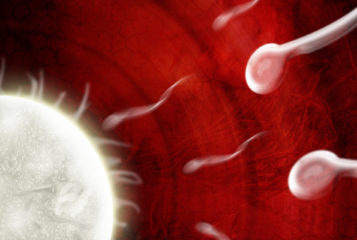Analysis of the genomes of thousands of women suggests that a woman's genes influence the age at which she first becomes a mother and the number of children she will have.
In a new study published in PLOS One, researchers found that genes account for about 15 percent of the differences between women when they have their first baby, and 10 percent of the differences in the number of children they have.
'Social and environmental factors mean women in modern societies are delaying starting families. This research tells us there are genetic differences between women which could be significant for women making decisions about when to have their first baby,' said project leader Professor Melinda Mills of the Department of Sociology at the University of Oxford, UK.
While previous studies considering women's fertility have been based primarily on twins, this study used molecular and quantitative genetics to examine the genomes of 7,700 unrelated women. It was part of the Sociogenome project, a collaboration between sociologists and geneticists in the UK and the Netherlands.
Social and environmental factors, such as use of contraception, were much more important than genetic factors in determining when women had their first babies and the number of children they had overall. The study also found, in keeping with previous studies, a negative correlation between these two - the later a woman has her first child the fewer children she is likely to have. The study found that genetics account for 20 percent of this correlation.
The researchers say that this shows that natural selection is still at play when it comes to human fertility patterns, and early fertility is an inherited reproductive advantage.
'In evolutionary and genetic terms, this suggests that younger generations today should be inclined to have children at an earlier age than women in the past,' said Professor Mills. 'However, what we actually observe is that the reverse is happening. Social and environmental factors mean women in modern societies are delaying starting families.'
The study's authors describe this as an 'evolutionary override', and they call for 'an integrative approach between the social and biological sciences... to better understand the changing patterns in, or even predict, future levels of human fertility'.
Sources and References
-
Genetics plays role in deciding at what age women have first child, says study
-
Genes greatly influence when and how many babies a woman will have, study finds
-
Human Fertility, Molecular Genetics, and Natural Selection in Modern Societies
-
Study pinpoints what part genes play in the age of first-time mums and family size
-
Feminism 'overrides' early-birth gene






Leave a Reply
You must be logged in to post a comment.